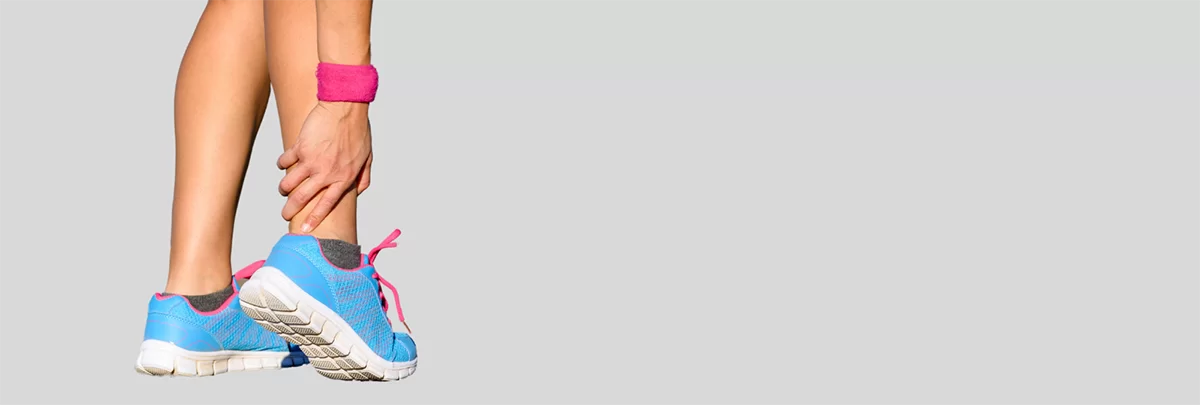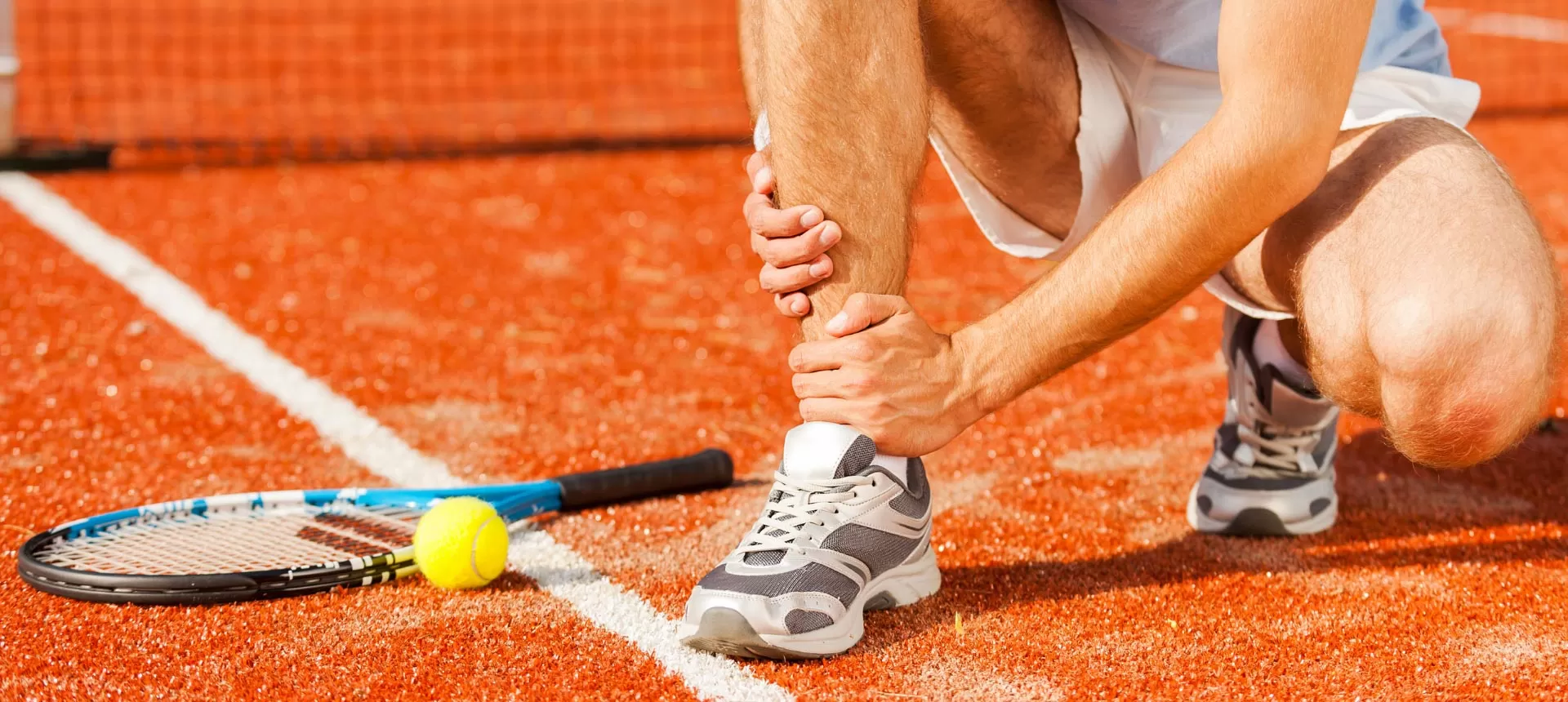
Sprains and Strains
Sprains, strains, and contusions, as well as tendinitis and bursitis, are common soft-tissue injuries. Sprains and strains both refer to damage to the soft tissues in the body, including ligaments, tendons, and muscles. People use the words “sprain” and “strain” almost interchangeably, to describe everything from a twisted ankle to a pulled hamstring. But they’re not the same. A sprain is a stretch or tear in a ligament. Ligaments are bands of fibrous tissue that connect bones to bones at joints. A strain is also a stretch or tear, but it happens in a muscle or a tendon. Tendons link muscles to the bones. They are common injuries that share some symptoms but affect different body parts.
Symptoms and Signs
Sprains tend to have symptoms more localized to the injured joint. When the joint is injured, it’s possible to feel a tear or pop in the joint. Pain is usually immediate, and depending on the severity of the injury, it may not be possible to use the joint. Signs and symptoms of sprains include pain, swelling, bruising, instability of the joint, and decreased range of motion.
Strains, whether acute or chronic, have symptoms localized to the muscle groups or tendons that are injured. Pain can be over a small area, or a larger area, such as a group of muscles. Pain can be immediate in an acute strain, or it may be delayed in the case of an overuse injury. Signs and symptoms of strains include pain, inflammation, muscle spasm, muscle cramping, muscle weakness, and bruising may occur but may be delayed for several days.
Soft-tissue injuries fall into two basic categories: acute injuries and overuse injuries. Acute injuries are caused by a sudden trauma, such as a fall, twist, or blow to the body. Examples include sprains, strains, and contusions. Overuse injuries occur gradually over time when an athletic or other activity is repeated so often that areas of the body do not have enough time to heal between occurrences. Tendinitis and bursitis are common soft-tissue overuse injuries.
Common soft tissue injuries
Sprains
A sprain is a stretch and/or tear of a ligament, a strong band of connective tissue that connects the end of one bone with another. Ligaments stabilize and support the body’s joints. For example, ligaments in the knee connect your thighbone (femur) with your shinbone (tibia), enabling you to walk. The areas of the body that are most vulnerable to sprains are the ankles, knees, and wrists. A sprained ankle can occur when your foot turns inward, placing extreme tension on the ligaments of your outer ankle. A sprained knee can result from a sudden twist, and a wrist sprain can occur if you fall onto an outstretched hand.
Sprains are classified by severity:
Grade 1 sprain (mild): Slight stretching and some damage to the fibers of the ligament.
Grade 2 sprain (moderate): Partial tearing of the ligament. There is abnormal looseness (laxity) in the joint when it is moved in certain ways.
Grade 3 sprain (severe): Complete tear of the ligament. This may cause significant instability.
While the intensity varies, pain, bruising, swelling, and inflammation are common to all three categories of sprains. Treatment for sprains begins with the RICE protocol and physical therapy. Moderate sprains often require a period of bracing (for example, a CAM walking boot can be worn to help support and immobilize a sprained ankle). The most severe sprains may require surgery to repair torn ligaments.
Strains
A strain is an injury to a muscle and/or tendon. Tendons are fibrous cords of tissue that attach muscles to bone. Strains often occur in the back or leg (typically, the hamstring). Similar to a sprain, a strain may be a simple stretch of your muscle or tendon, or it may involve a partial or complete tear of the muscle and tendon. Symptoms of a strain may include pain, muscle spasm, muscle weakness, swelling, inflammation, and cramping. Soccer, football, hockey, boxing, wrestling and other contact sports put athletes at risk for hamstring strains, as do sports that feature quick starts, such as hurdling, long jumping, and running races. Gymnastics, tennis, rowing, golf and other sports that require extensive gripping have a high incidence of hand sprains. Elbow strains frequently occur in racquet, throwing, and contact sports. The recommended treatment for a strain is the same as for a sprain: rest, ice, compression and elevation. This should be followed by simple exercises to relieve pain and restore mobility. Surgery may be required for a more severe tear.
Contusions (Bruises)
Contusions occur when a direct blow (or repeated blows) by a blunt object strikes part of the body, crushing underlying muscle fibers and connective tissue without breaking the skin. A contusion can result from falling or jamming the body against a hard surface. Discoloration of the skin is caused by blood pooling around the injury. Most contusions are mild and respond well to the RICE protocol. If symptoms persist, medical care should be sought to prevent permanent damage to the soft tissues.
Tendinitis
Tendinitis is an inflammation or irritation of a tendon or the covering of a tendon (called a sheath). It is caused by a series of small stresses that repeatedly aggravate the tendon. Symptoms typically include swelling and pain that worsens with activity. Professional baseball players, swimmers, tennis players, and golfers are susceptible to tendinitis in their shoulders and elbows. Soccer and basketball players, runners, and aerobic dancers are prone to tendon inflammation in their knees and ankles. Tendinitis may be treated by rest to eliminate stress, anti-inflammatory medication, steroid injections, splinting, and exercises to correct muscle imbalance and improve flexibility. Persistent inflammation may cause significant damage to the tendon, which may require surgery.
Bursitis
Bursae, are small, jelly-like sacs that are located throughout the body, including around the shoulder, elbow, hip, knee, and heel. They contain a small amount of fluid, and are positioned between bones and soft tissues, acting as cushions to help reduce friction. Bursitis is inflammation of a bursa. Repeated small stresses and overuse can cause the bursa to swell. Many people experience bursitis in association with tendinitis.
Bursitis can usually be relieved with changes in activity and anti-inflammatory medications, such as ibuprofen. If swelling and pain do not respond to these measures, your doctor may recommend removing fluid from the bursa and injecting a corticosteroid medication. The steroid medication is an anti-inflammatory drug that is stronger than the medication that can be taken by mouth. Corticosteroid injections usually help relieve pain and swelling.
Although surgery is rarely necessary for bursitis, if the bursa becomes infected, an operation to drain the fluid from the bursa may be necessary. In addition, if the bursa remains infected or the bursitis returns after all nonsurgical treatments have been tried, your doctor may recommend removal of the bursa. Removal (excision) of the bursa can be done using a standard incision (open procedure), or as an arthroscopic procedure with small incisions and miniature surgical instruments. Your doctor will talk with you about which procedure is appropriate for your situation.

CuraLaser - The Newest Medical Breakthrough to Alleviate Musculoskeletal Pain
During the physical exam, your doctor will check for swelling and points of tenderness in your affected limb. The location and intensity of your pain can help determine the extent and nature of the damage. X-rays can help rule out a fracture or other bone injury as the source of the problem. Magnetic resonance imaging (MRI) or ultrasound also may be used to help diagnose the extent of the injury.
Treatment
The gold standard of care for sprains and strains is known as “RICE” therapy. It stands for: RICE therapy is particularly important during the first 24 to 72 hours after a sprain or strain happens. During this time, you can also take medication to curb pain. Check with your doctor to see what medicine is OK for you, and follow the instructions on the label exactly. If you have questions, ask your doctor or pharmacist. As your pain and swelling gets better, you can cut down on RICE therapy and start to use the affected area again. You’ll need ice and compression less often, such as at the end of the day, as swelling and pain tend to flare up after use.
Rehab : A physical therapist can help you to maximize stability and strength of the injured joint or limb. Your doctor may suggest that you immobilize the area with a brace or splint. It’s best to rehab your injury gradually. Your doctor or a physical therapist can recommend certain exercises that can help you get back to your normal routine bit by bit, at a safe pace. For example, if you’ve sprained your ankle, you may begin by walking slowly on a flat treadmill, then move to an incline, then begin to jog. Someone with a sprained wrist may begin with range-of-motion exercises, and then move on to lifting very light weights.
Over-the-counter pain medications such as ibuprofen (Advil, Motrin IB, others) and acetaminophen (Tylenol, others) also can be helpful. For some injuries, such as a torn ligament, surgery may be considered.
Prevention and Self care
References :
https://www.mayoclinic.org/diseases-conditions/sprains/diagnosis-treatment/drc-20377943
https://www.webmd.com/fitness-exercise/understanding-sprains-strains#1
https://orthoinfo.aaos.org/en/diseases–conditions/sprains-strains-and-other-soft-tissue-injuries/
https://www.emedicinehealth.com/sprains_and_strains/article_em.htm